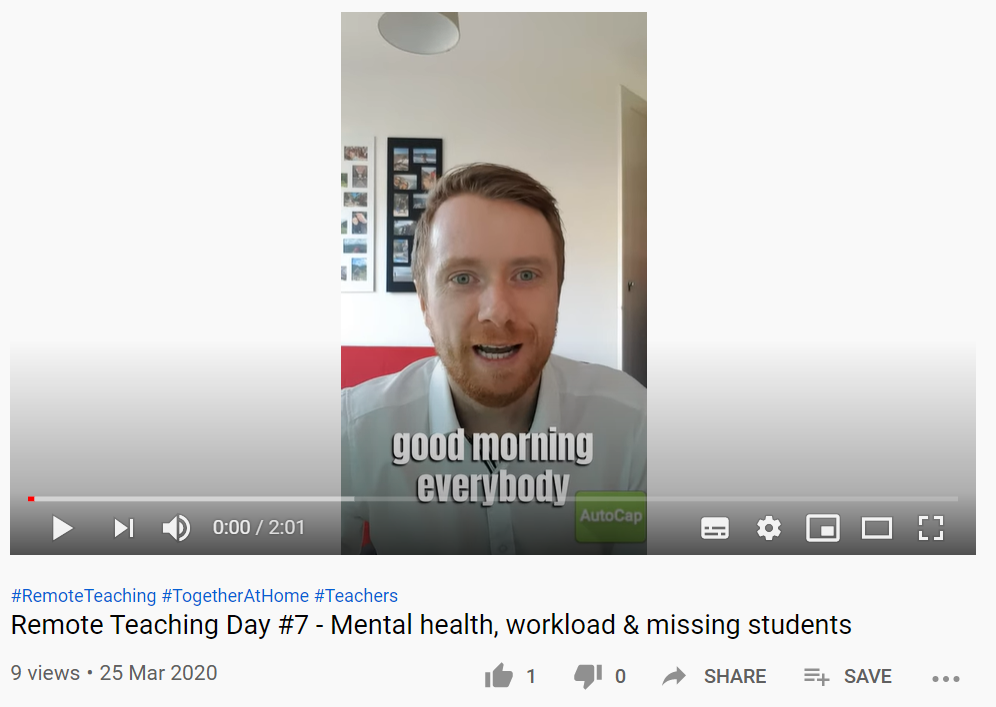It has been challenging to try to provide meaningful learning experiences for children when you have half of them on a screen on your whiteboard and the other half in front of you. I certainly felt more tired and less happy with my teaching this week but I had to remind myself that this is so new for all of us. We never trained or dreamt of having to do something like this. Now is not the time for high expectations on our own shoulders. We are all adjusting; we are all fumbling through this. I had to remind myself that the focus now, more than ever, needs to be on happiness, inclusion and relationships. Many of the students themselves were also quite nervous and shy to get involved in class as they suddenly felt a lot more in the spotlight with only a smattering of their friends around for support. It is now that they need our support more than ever.
Luckily, I work at a school with fantastic leadership who had left no stone unturned in the preparations for us being back on campus: classrooms are spaced out, there are floor markings around the teachers desk, hand sanitisers in every classroom, one way traffic for the cafeteria, staggered end times for younger students, masks are available for those who want them, as well as some excellent and funny instructional videos for students before they came back… using teddy bears to show what social distancing looks like. The students have been great and understand the need to change their social behaviours but… and it is a big but, they are children. As soon as they are out of class, they are of course getting within a metre of each other. This is unavoidable. Official guidance from the Swiss government is that children do not need to socially distance the way adults do but that wherever possible we should use best practice and judgement to avoid them being in groups. So that is what we are doing.
My overwhelming feeling is appreciation and gratitude to be able to work at such a great school, that had us so well prepared for all this and to be back in my classroom, seeing my colleagues and my students faces again. My friends and fiancée are great of course, but I’ve really missed having people around who laugh at all my terrible jokes. Let’s be honest, none of us became teachers so that we could sit behind a computer all day on our own. Teaching is a people-centred vocation and I, for one, am delighted to see that all those wonderful people are the same as ever. There is no difference there.
The hardest part for me in all this is that so many of the fun things have been stripped out of our jobs: the spirit weeks, the year group events, the graduations, the theatre productions, the sports competitions, the field trips… That is the hard part. But if it’s like this for us, then imagine what it’s like for our students. We now have a duty to make our classes more engaging, more fun and more centred around our students’ own lives and personalities. They are coming to school and going to our classes… that is it. No socializing, no sports, no events. Now is the time to be brave, try out new approaches and do whatever we can to get our students smiling again. Ask them what they want to do, what they want to learn and how they feel their learning should be assessed. Start there. Can we reinvent our unit to satisfy the three basis needs of relatedness, autonomy and competence which are required for motivation to flourish?
Going back to school is different. And it will be different for some time. But the people are the same, great people who were there before all this. Put the ‘people’ at the centre of your planning. Lower the expectations on yourself, on your students and think about the people. If not now, when?


 RSS Feed
RSS Feed